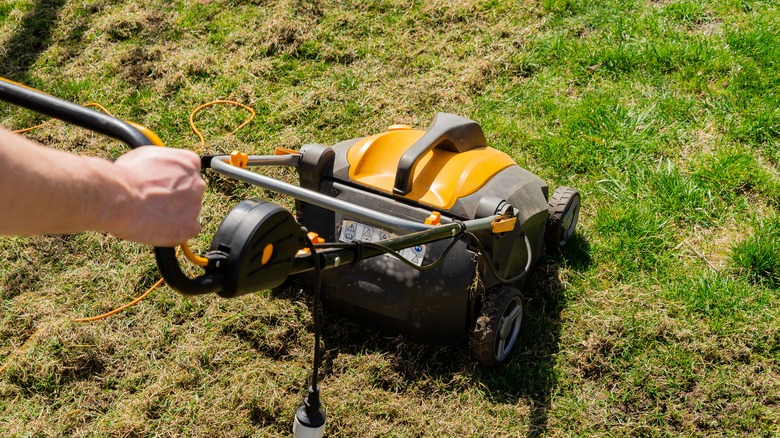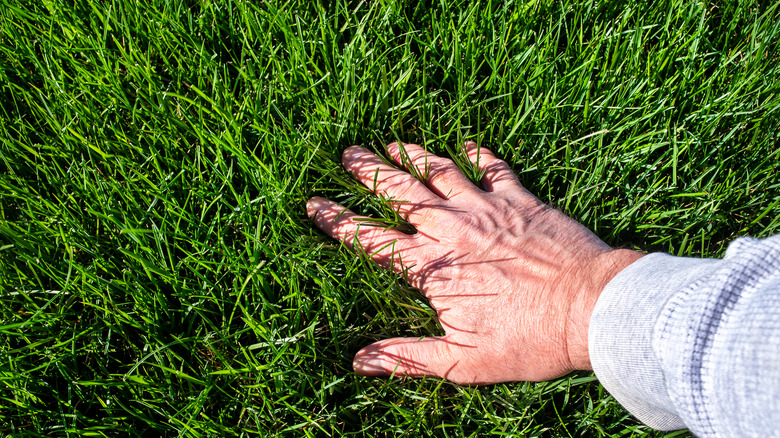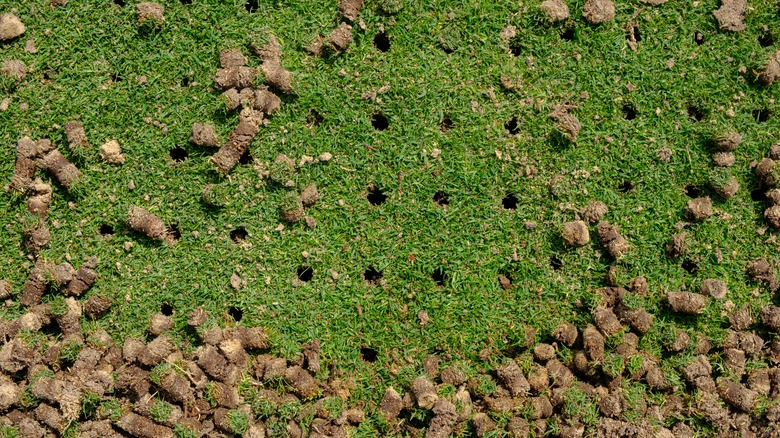Is It A Good Idea To Aerate Warm Season Grass And If So, When Should You?
Both warm and cold season grasses will benefit from aeration, which allows roots to grow deeper, resulting in a healthier lawn. If you're dreaming of lush green grass thriving in your yard but just can't seem to get there, you'll want to hone in on your lawn's soil health. Checking pH levels, using nutrient-rich fertilizer, and picking the right mower are all important considerations — as is aeration. However, the right time to aerate will depend on what type of grass you have. If your lawn is made up of warm season grass (such as bahia, bermuda, centipede, or zoysia grass), you'll want to wait until late spring. This will give the grass enough time to properly wake up from its winter dormant state and ensure that its roots are ready to fully absorb all of that extra air and sustenance. However, this isn't something you should automatically do every single spring. Rather, there are a few key factors to keep in mind.
If you want a gorgeous landscape, taking this extra step before seeding is key. Over time, soil becomes increasingly compact, cutting off roots' access to air, water, and essential nutrients. When this happens, grass and plants can't thrive as they should.
Check for soil compaction to determine if you need to aerate
All soil will eventually become compacted, but not every lawn will benefit from the same aeration schedule. If you have sandy soil, for example, or you see that your grass is thriving and healthy, you can aerate it once every two or three years. If you're dealing with clay soil, however, yearly aeration will be necessary. The same is true of any particularly high-traffic areas. If you're constantly using your yard with family and friends or have kids and pets who enjoy playing outdoors, you'll likely notice the soil in that area compacting more quickly than in others. If that's the case, it'll benefit from being aerated once a year as well.
Perhaps the easiest way to tell if you need to aerate your lawn is to take a screwdriver and stick it down into the soil. If you have a hard time doing so, that's a surefire sign that your soil has become overly hard and dry, and it's time to aerate it. Other telltale signs include puddles of water pooling on your lawn after you water it or when it rains, as well as yellow and brown patches of grass.
Water your grass well, and choose the right aerator
Once you've concluded it's time to aerate your warm season grass, you'll want to wait for a spring shower before doing so. Alternatively, you can apply 1 inch of water to your lawn the day before you plan to aerate it. This will soften the soil and allow you to aerate it more quickly and efficiently.
While spike aerators are a common choice, these can actually compact soil further. That's why professionals most often use a core aerator (also called a plug aerator), which removes soil plugs and leaves them on top of your lawn. If it's your first time aerating, you'll want to go over your lawn twice in perpendicular directions. If, on the other hand, you've been maintaining it regularly and the soil isn't overly compacted, one pass will suffice. Before starting, just be sure to mark any sprinklers or shallow utility lines so you don't accidentally puncture them.
Once you're finished aerating, water and feed your lawn, and leave the plugs in place. These will decompose and actually help feed the grass below. Afterwards, continue to water every couple of days for two weeks to ensure a beautiful lawn all season long.


